“Others”
Heritage conservation faces a strained equilibrium between historical value and present needs; it remains a challenge for many countries as continual development often prioritises the economy over social equity, much less historic preservation. Conservation as part of an ethical responsibility thus becomes difficult due to a lack of genuine appreciation — translating intangible cultural characteristics into practice in modern-day would be challenging. This can be observed in Singapore’s development, where racial diversity has been conflated into 4 main groups, with ethnic minorities categorised as “others”. It highlights a lack of acknowledgement, representation, and appreciation of these complex cultures despite their integral role of Singapore’s history and early development. Being an island of gathered immigrants, multi-racialism is the crux of the local identity. Therefore, it is essential for Singapore to remember her history, and by extension, the heritage of ethnic minorities in its authenticity. Preserving the heritage of Portuguese Eurasians is the first step to recognising and preserving the heritage of ethnic minorities. This project focuses one of the earliest markers of the presence of Portuguese Eurasians: the St Joseph’s Church compound along Victoria Street. It studies the site from its origins to present, looking into its functions and the community. It attempts to reconcile the past and present, reconnecting with the past and revitalising the site in modern-day by finding a balanced approach between cultural preservation, meeting the needs to the community, and contemporary relevance.
Portuguese Eurasians in Singapore
The spread of Christianity in Asia started in the 15th Century with Portugal and Spain. In 1493, a system to patronage, the Padroado, was set up, dividing the new mission fields into two spheres of ecclesiastical influence — Spain was assigned the Western territories, and Portugal the East.
The Capture of Malacca by the Portuguese in 1511 saw the early spread of Christianity in Southeast Asia, as well as the growth of the Portuguese Eurasians through mixed marriages in an attempt to consolidate control. The Eurasian Community and its descendants spread to the neighbouring lands, including Singapore. They continued to retain aspects of the Portuguese culture, customs and religion, a big part of it being Catholicism and the Kristang Language.
In 1558, an Episcopal Seat was established in Malacca, declared a diocese with its own Bishop. From Malacca, Christian missionaries reached further afield into Southeast Asia, establishing numerous Christian communities. Father Maia founded the Portuguese Mission in Singapore on 30 June 1825 when he arrived and saw the local Catholics without resident missionaries.
The first Church of St Joseph was completed and opened in 1853. It served the local population and by the 1880s, as the congregation grew, a new and bigger church was proposed for rebuilding. It was only on 30 June 1912 that the new church was completed and opened. St Joseph’s Church still stands today and is presently undergoing renovation (2020), that will be completed in 2021.
1999 saw the official cessation of the presence of the Portuguese Mission, with jurisdiction of the Church officially transferred to the Archbishop of Singapore. Today, the compound of the Portuguese Mission is a designated conservation site with the main buildings of interest, the former St Anthony’s Boys’ School and Parochial House, holding a conserved status. St Joseph’s Church is a gazetted national monument while the former St Anthony’s Convent is partially conserved and currently occupied for commercial use.
“the spirit of the Portuguese Mission will be kept alive through devotions to Our Lady of Fatimah, the Sacred Heart, St. Anthony of Lisbon, St. Jude etc with monthly processions of Our Lady, the Holy Week Processions, etc, which have been cherished by their forefathers.”
In Context
Authenticity varies across culture and history. It is important to look into the past to examine values attached to the notion of authenticity for the Portuguese Eurasians. During colonial times, the Portuguese exerted control in Malacca through soft power, using several means of control:
- Through mixed marriages, wherein a new culture with new practices was formed, shaped mainly by way of religion and language.
- Religion- At that time, the power of the Portuguese was represented by the church and Christianity was a big part of the Eurasian identity. This also relates back to the church and other ecclesiastical buildings that provide food, shelter and aid for the needy.
- The Portuguese also sought to assimilate through language, by approaching the indigenous people in their own tongue.
Based on these aspects, 3 main factors of authenticity have been identified: place-identity or spirit of place, in-line with preserving reverence of interiors and present atmosphere of exterior environment (the city), Identity of the Portuguese Eurasians which is heavily rooted in Christianity, and finally intentions that have shaped the establishments or practices of the Portuguese Mission.
Reconciling the Past and Present
Over the decades of development, site buildings have become increasingly divorced from the past and each other despite their proximity. Aside from St Joseph’s Church which continues some practices of the Portuguese mission, new programmes introduced to the site bear little reference to the past and overlooks the heritage of the Portuguese Eurasians.
The old compound of the Portuguese Mission should be reconnected to remember its history and heritage, collaborative programmes and activities can help create an inter-dependent system that revitalises the site. New interventions should not only enhance present functions but also views, drawing attention to the built heritage amongst the towering cityscape. They should add value to the site, whether in form, memory or function.
The Church and Beyond
St Joseph’s Church, the heart of the compound in history, continues to be so in present albeit in a different way. It extends beyond serving the church community to the general public, with new programmes that welcomes visitors and activity. Introducing a columbarium is a means of reconnecting people with their roots and identity, drawing them back to the church grounds, not just in remembrance of its history but their own as well.
Beyond that, the readapted St Anthony’s Boys’ School and new art block serve as both a transition and gateway to future development. In line with the plans for the Bras Basah. Bugis Art District as well as its history as an educational institution, it offers a space for arts education. Therein also contains the heritage gallery for Portuguese Eurasians, reflecting the history of the compound and serving as a reminder of Singapore’s multi-ethnic roots.
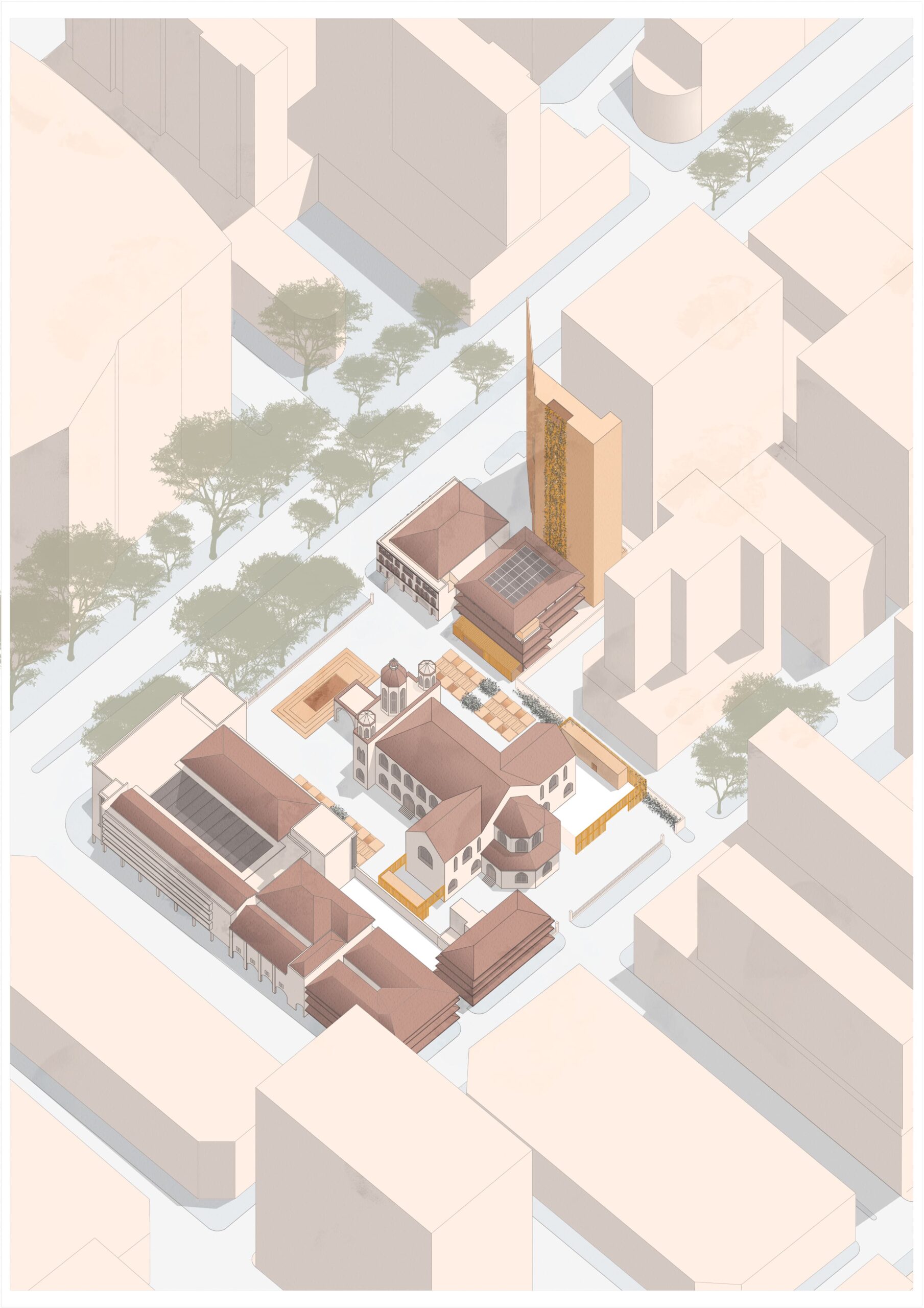
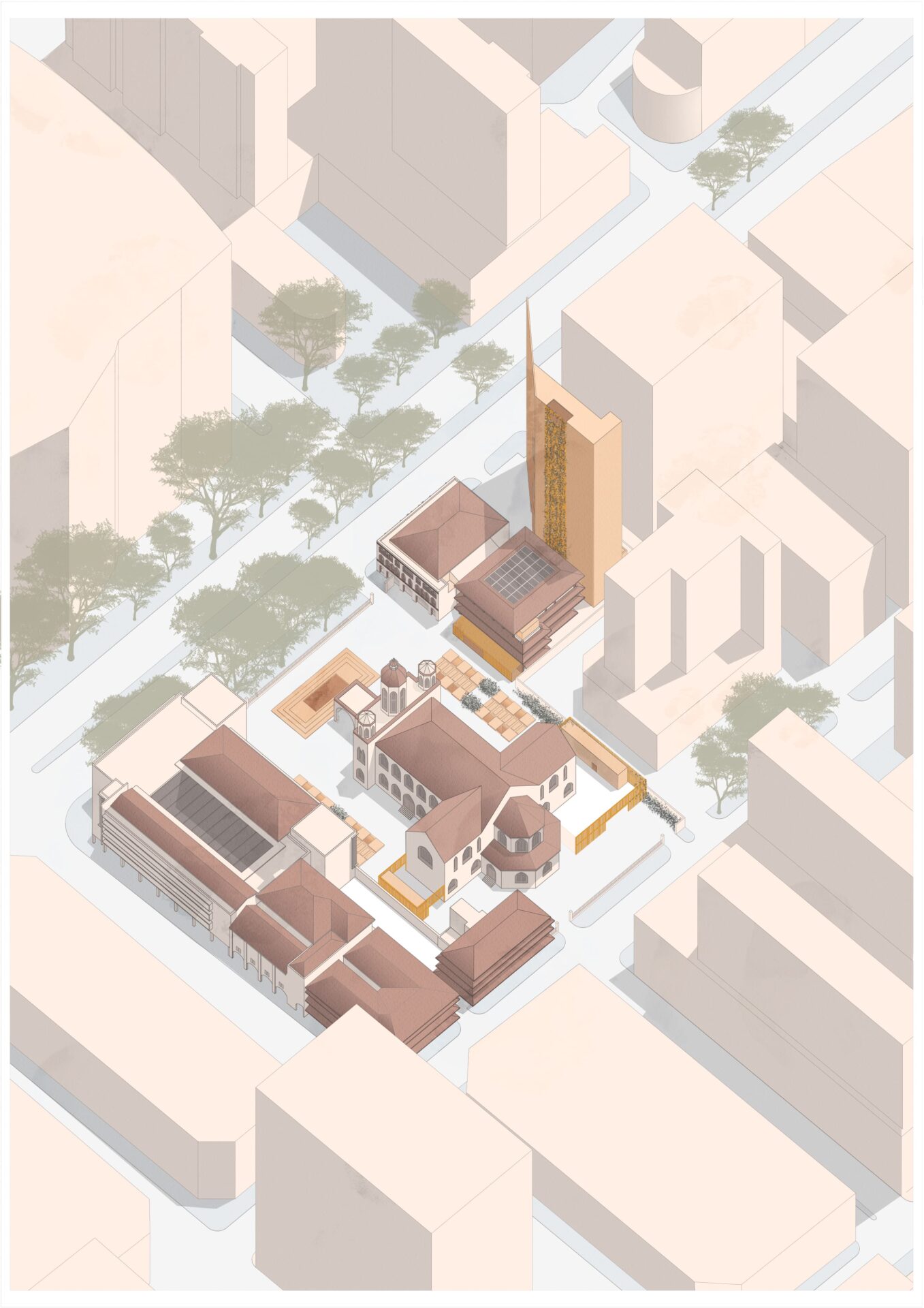


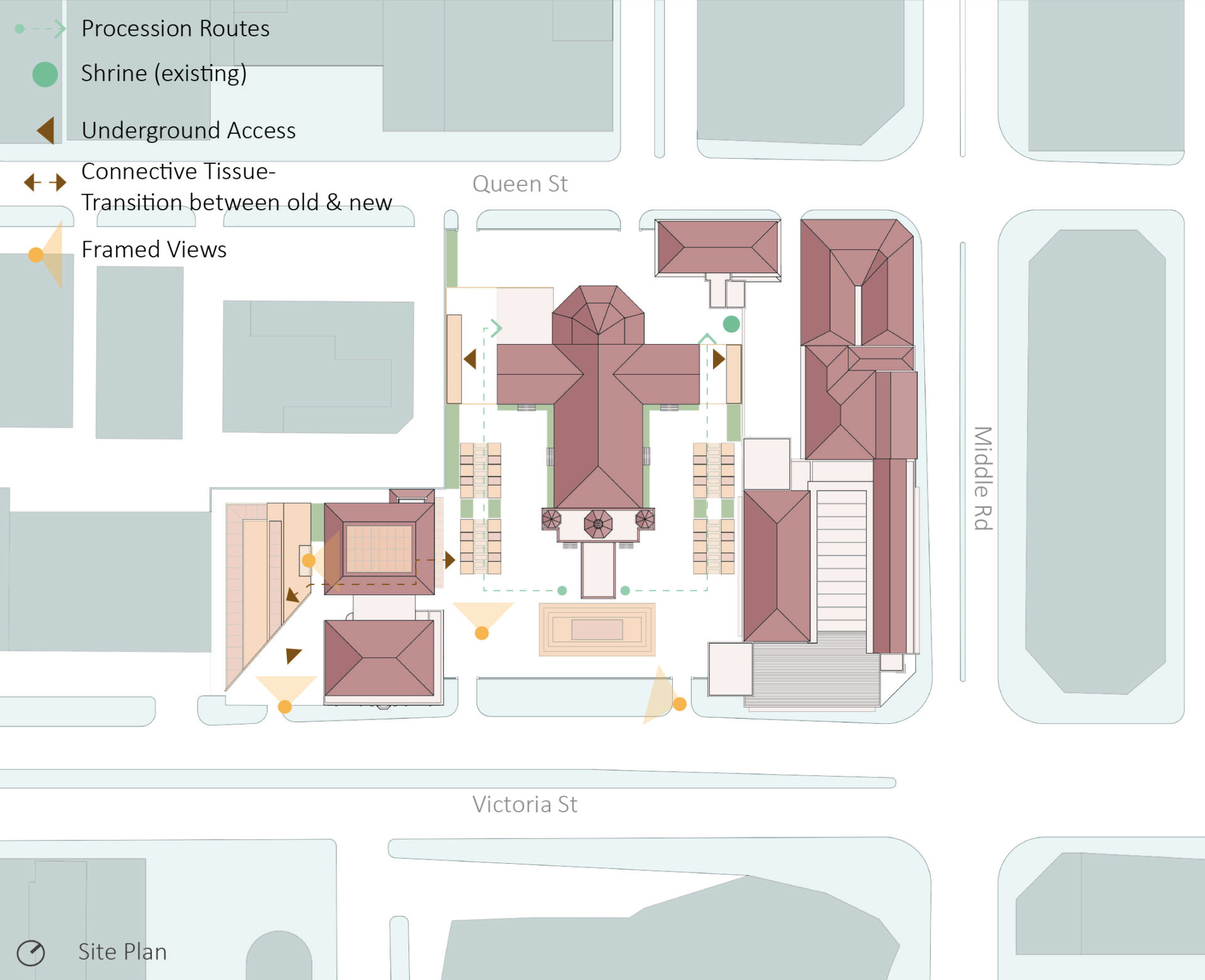
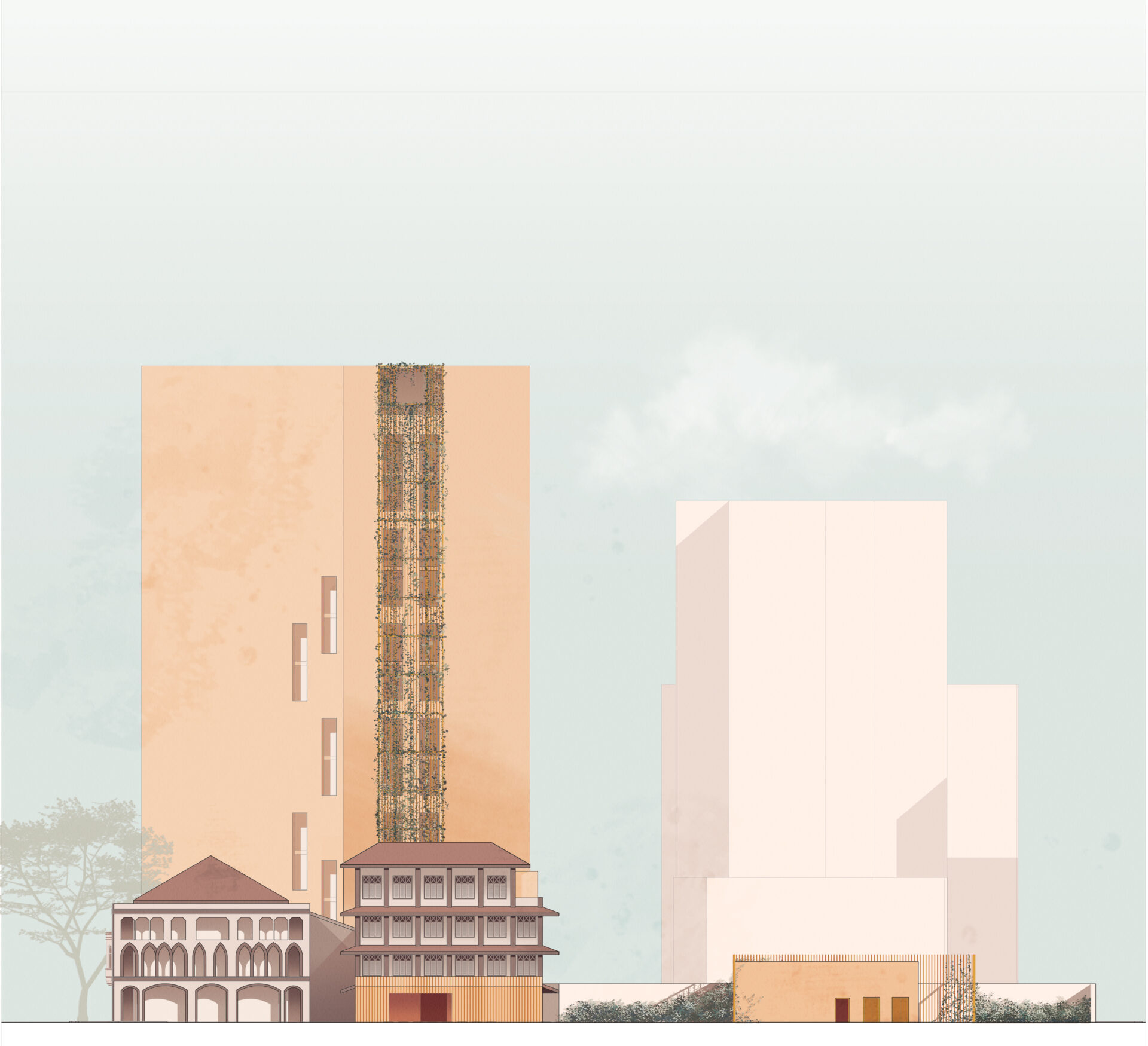
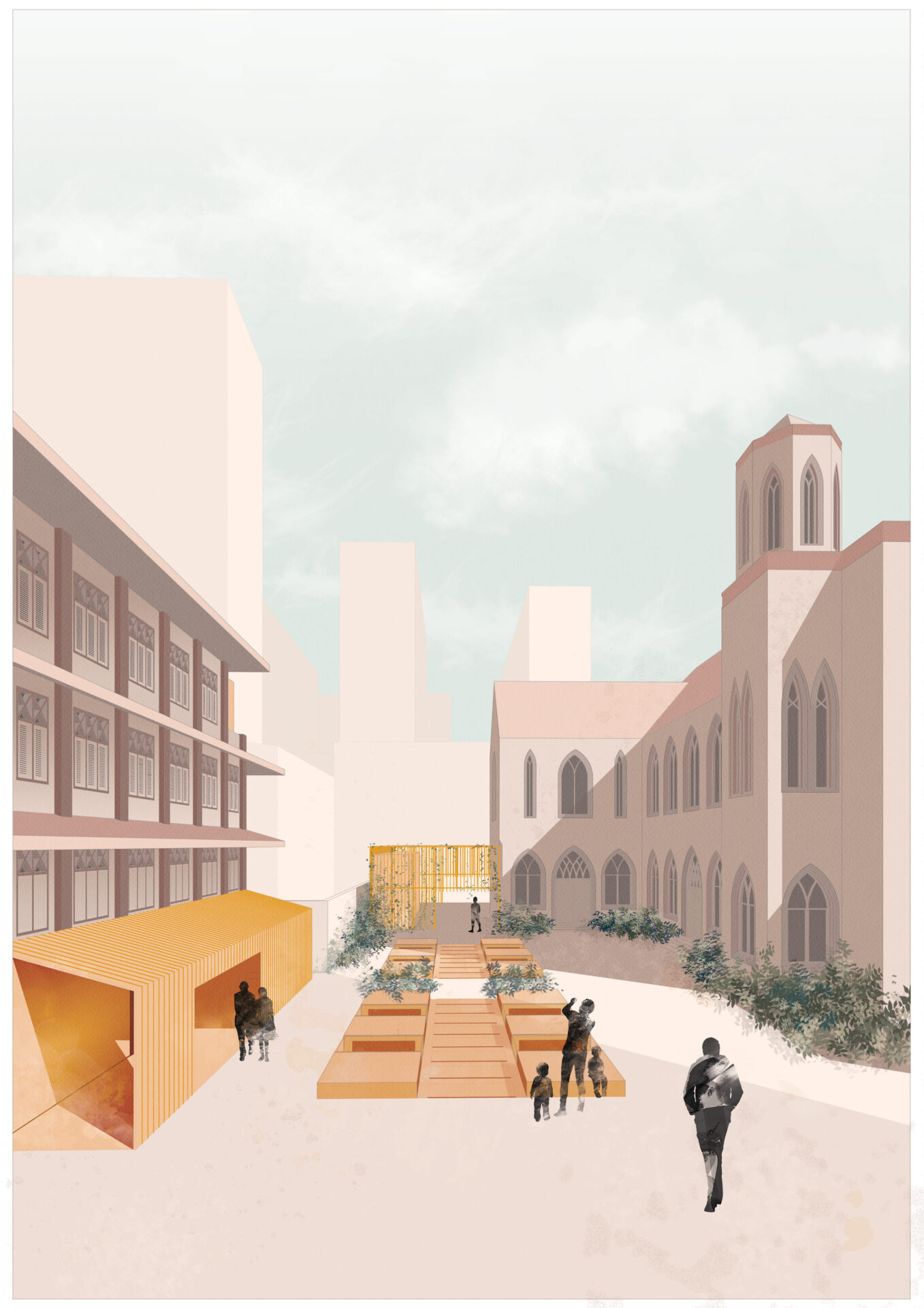
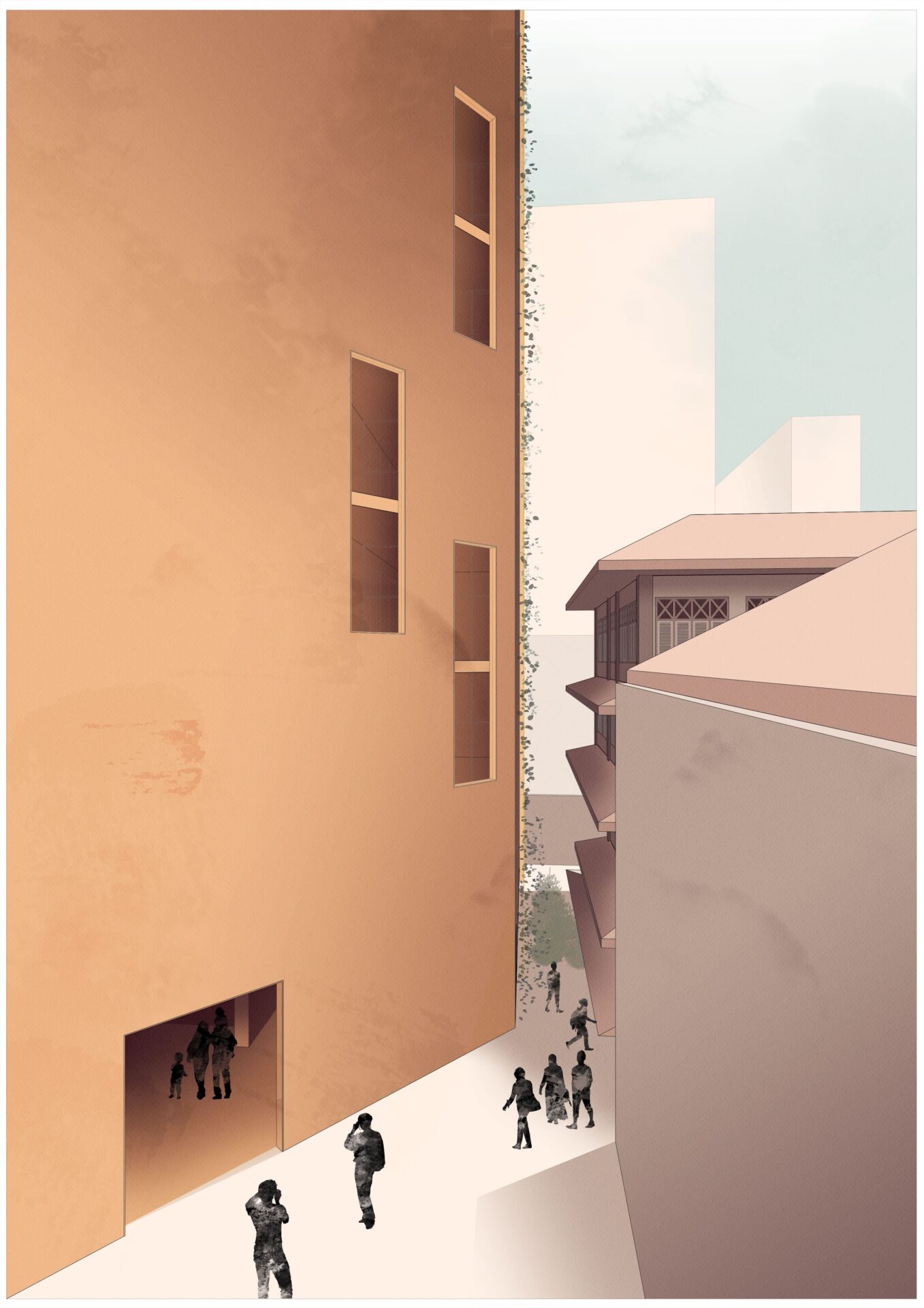
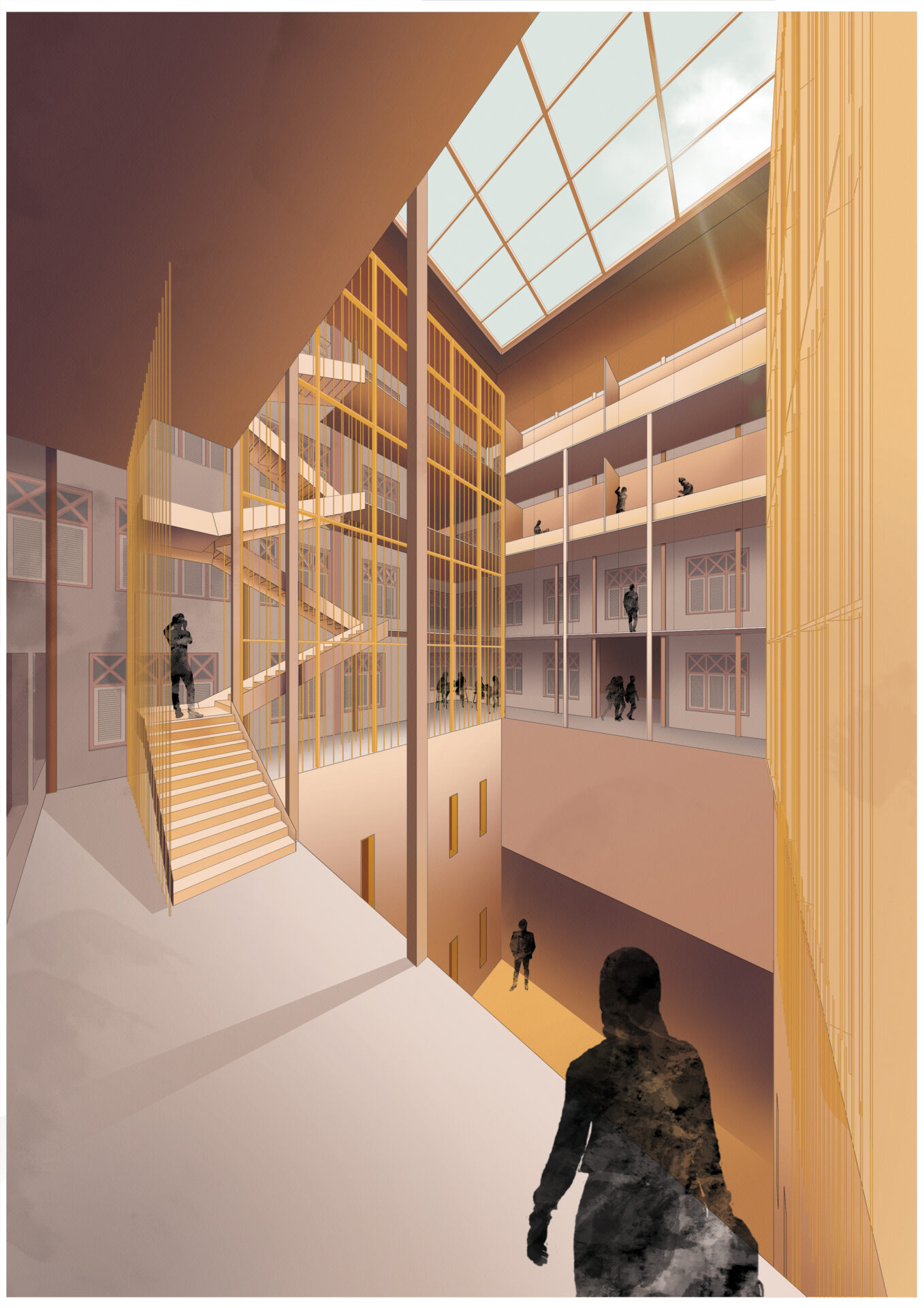

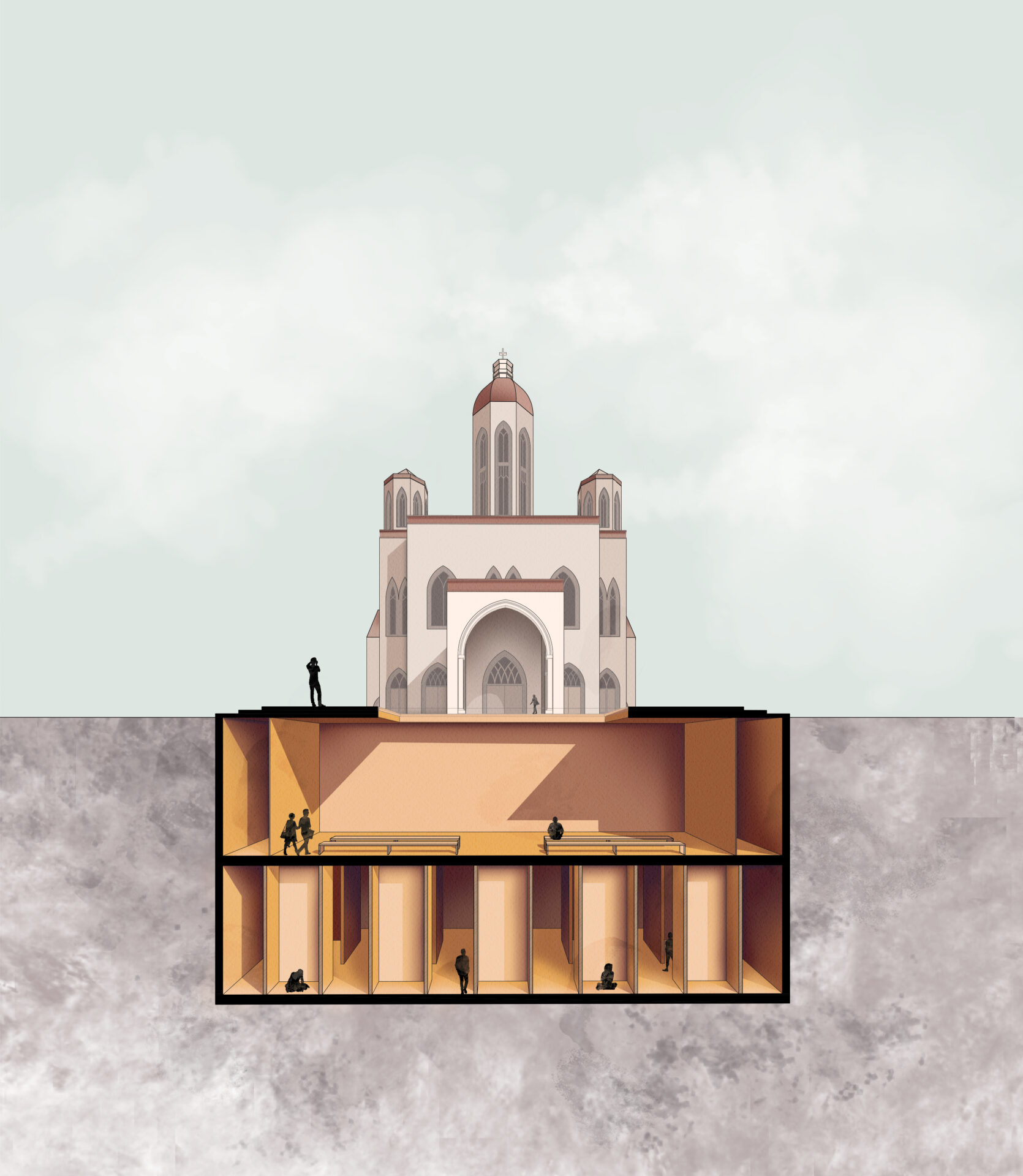
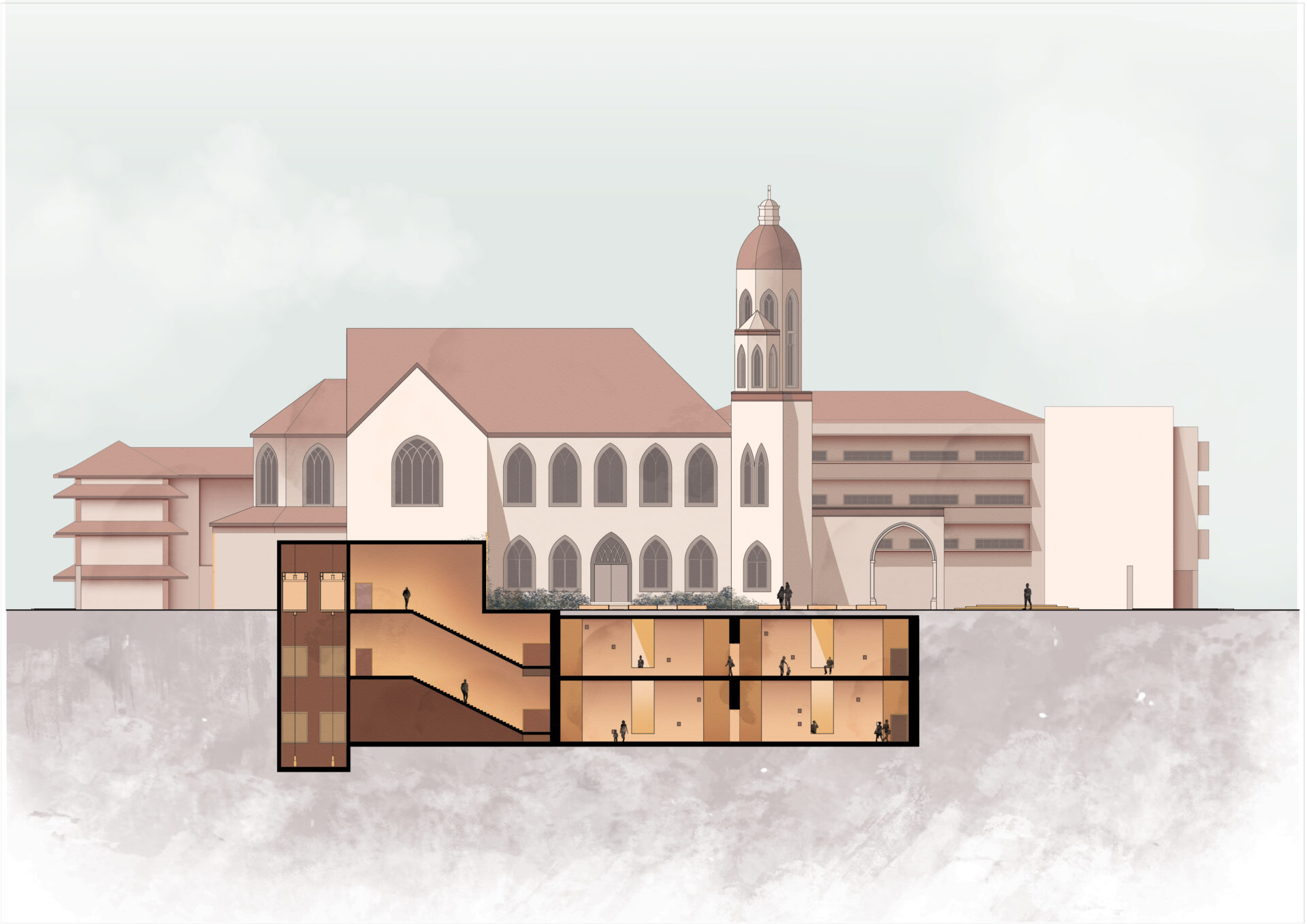
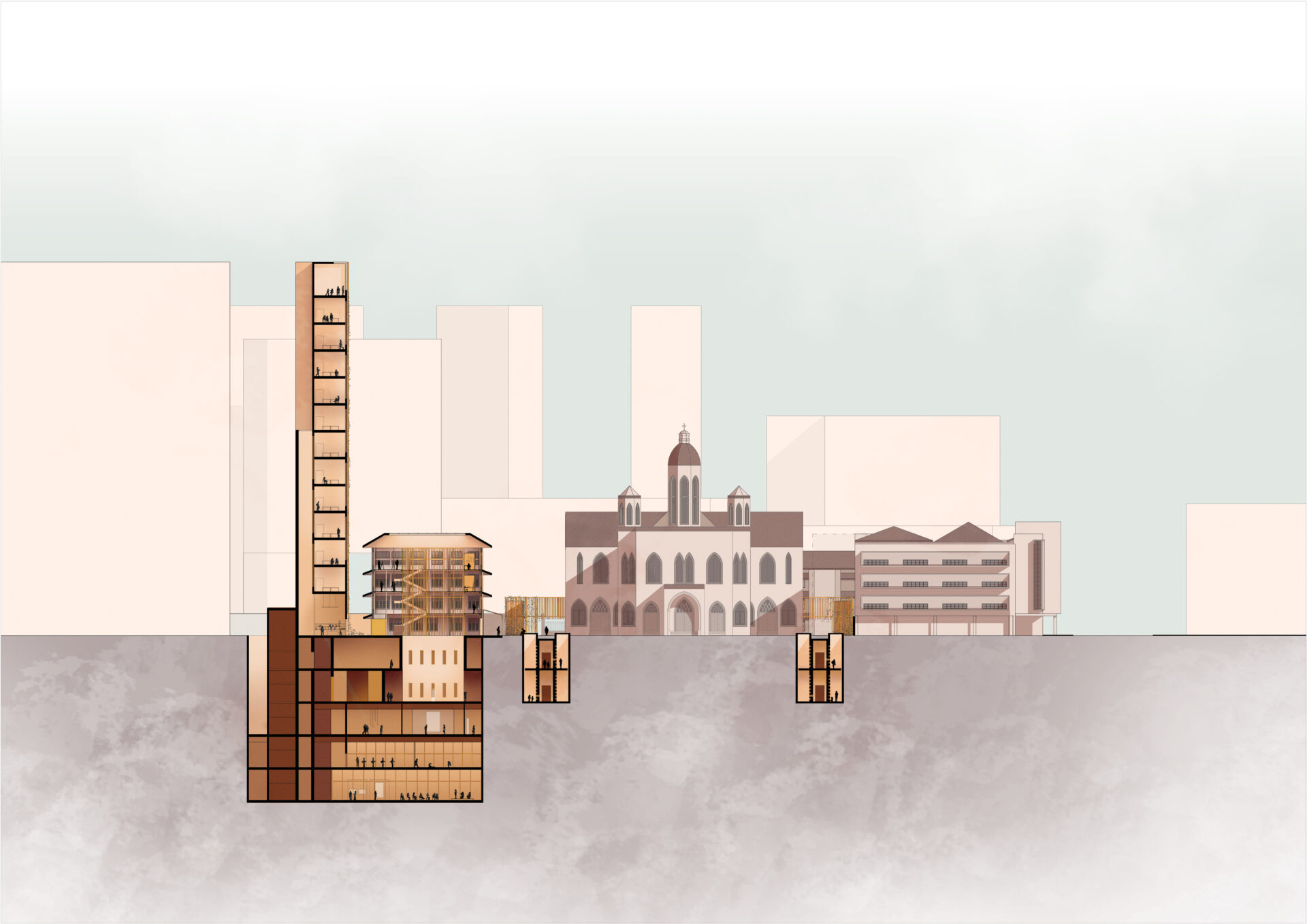

Supervisor's comments:
Singapore is a cosmopolitan city with a long history of the cultural and morphological layering process. Developments have affected the integrity of the cityscape and the lost memory of the place. Yingshan can tackle the complexity of adding new volumes and functions into a tight historical site with several conserved buildings and a National Monument building. Her design strategy of inserting a multi-story tower at the edge of the site and multi-levels underground spaces works well in terms of maximum retention and minimum intervention, providing new spaces to resurrect lost memories and restore the place’s cultural continuum.
- Assoc. Prof. Johannes Widodo (Dr.)